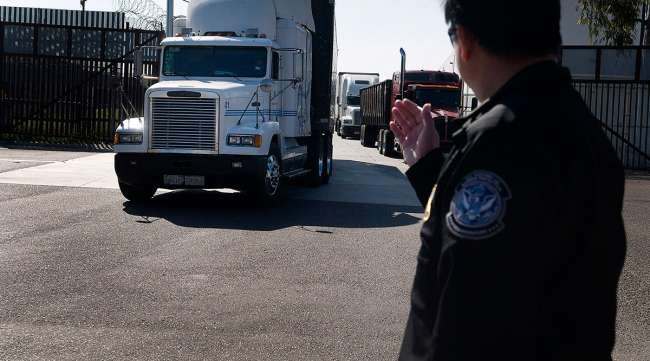Staff Reporter
Value of NAFTA Freight Jumped in October, BTS Finds

The United States carried more freight by value with its North American Free Trade Agreement partners in October 2017 than in October 2016, according to a study released by the Bureau of Transportation Statistics Jan. 4.
The bureau found that U.S.-NAFTA freight totaled $100.6 billion across all five major transportation modes this past October. That’s a 7.9% rise from October 2016, marking the 12th consecutive month in which the year-over-year value of U.S.-NAFTA freight increased in current dollars from the same month of the previous year.
Trucks were once again the most frequently used mode of freight transportation, accounting for 61.2% of imports and 67.3% of exports. “Trucks carried 64% of U.S.-NAFTA freight and continued to be the most utilized mode for moving goods to and from both Canada and Mexico,” BTS states in its report.
The value of goods moving by truck increased by 5.7%, while the value of goods traveling by pipeline increased by 9.3%, air by 6.1% and rail by 3.3%. However, all these increases are dwarfed by the leap shown in commodities moving by vessel, which rose by 32.6%.
“The large percentage increase in the value of goods moving by vessel is due in part to an increase in the unit value and an 18% increase in the tonnage of mineral fuels traded,” the report states.
The value of freight flows moving specifically between the U.S. and Canada increased by 6.8% from October 2016 to October 2017. BTS found that trucks carried 57.7% of the value of the freight to and from Canada.
Similarly, the value of freight flows between the U.S. and Mexico increased by 9% between October 2016 and October 2017. Trucks carried 70.2% of the value of freight to and from Mexico.
The top commodity passed between the U.S. and its NAFTA partners this October was vehicles and parts. Trucks were used more than rail to carry these goods to both Canada and Mexico.




